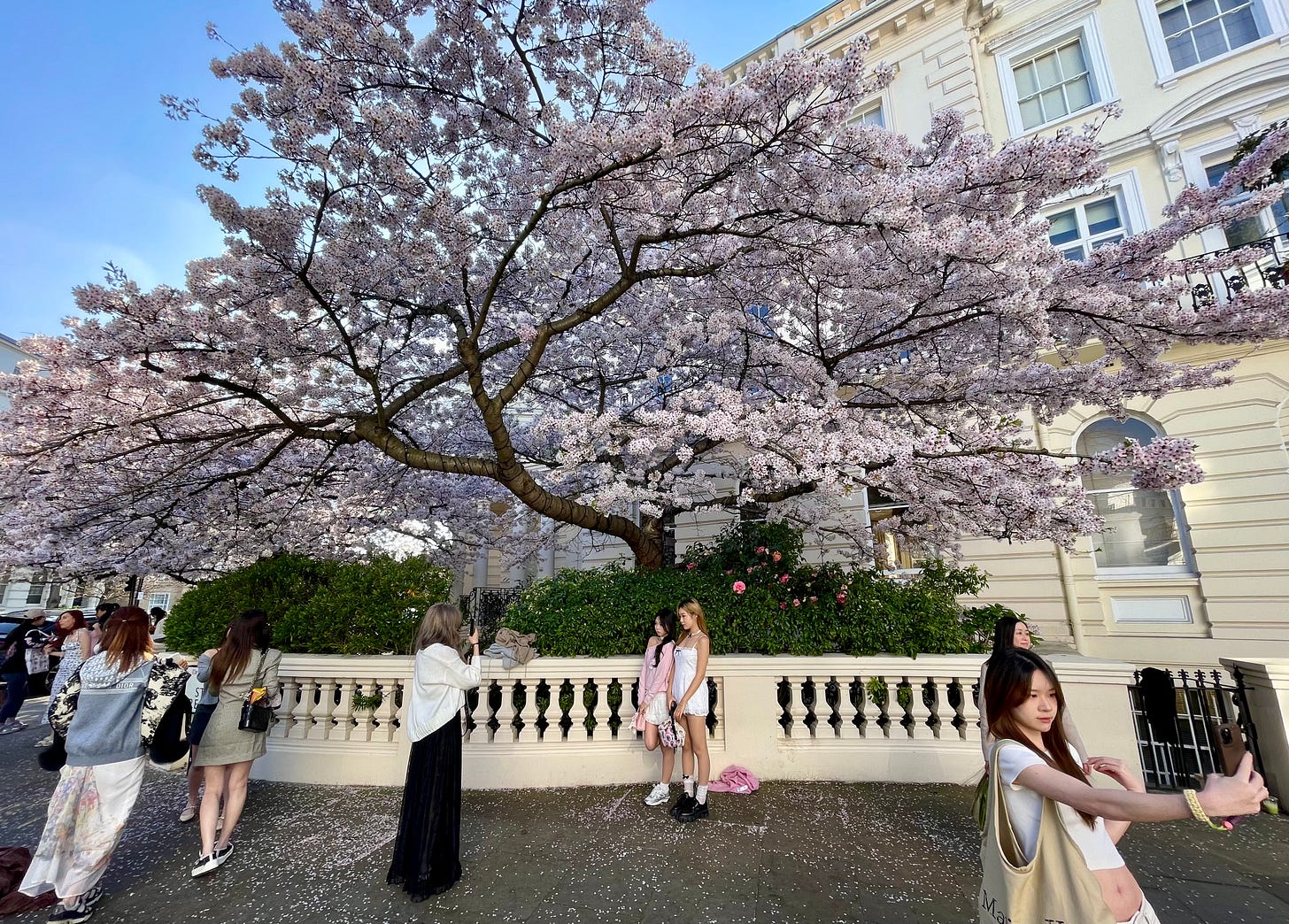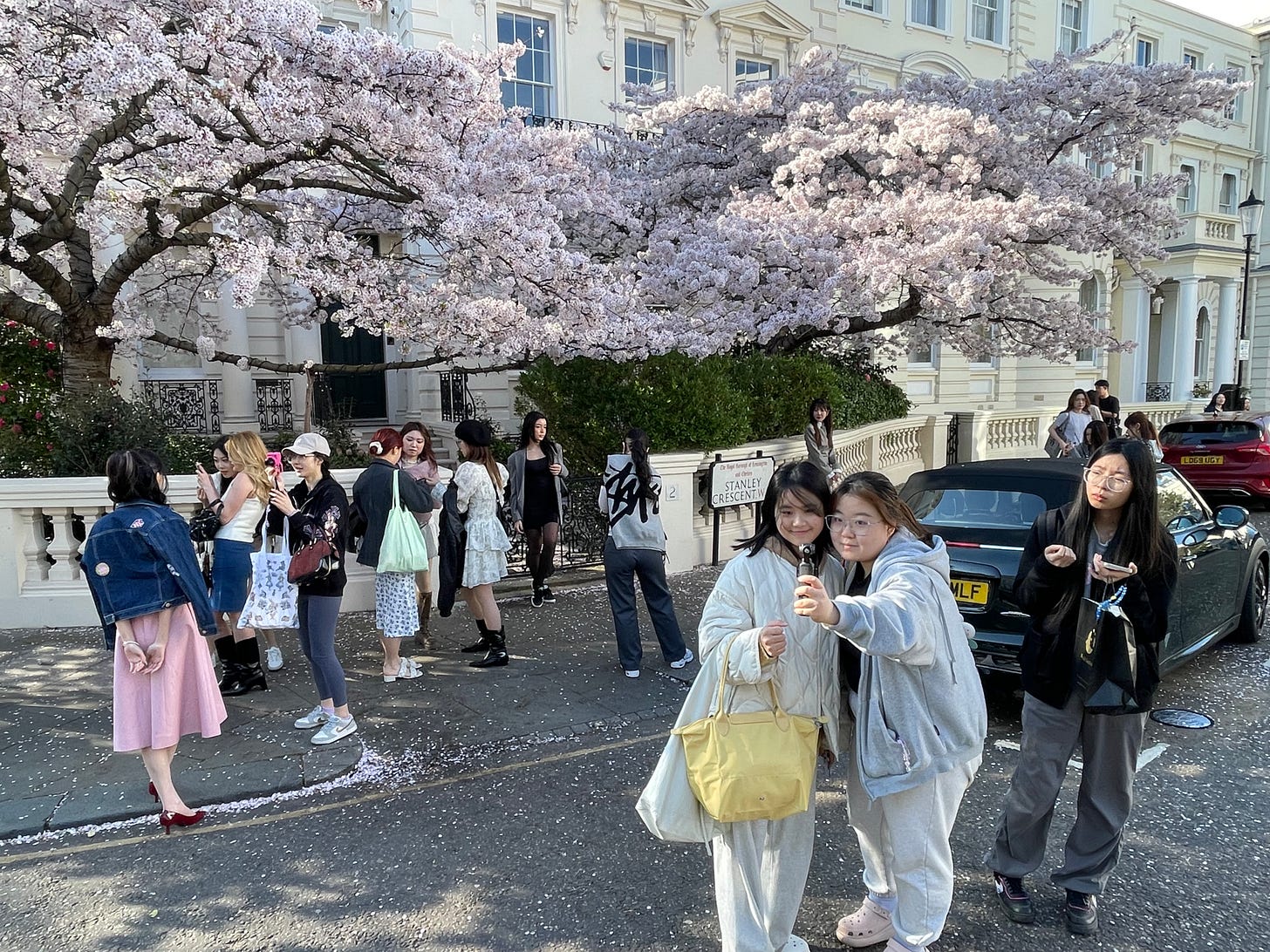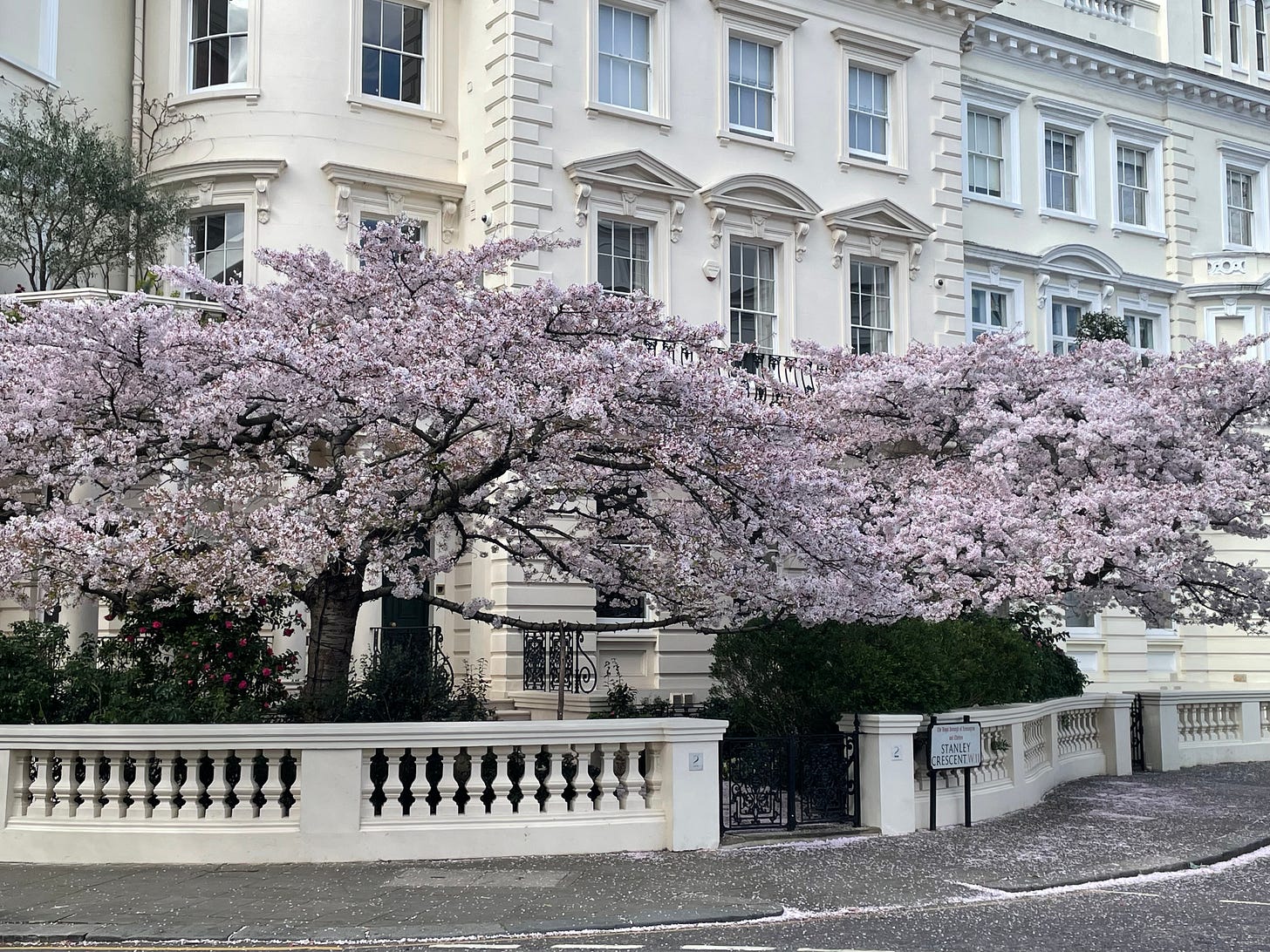In Notting Hill, London, there are two magnificent cherry trees which seem to stand in graceful defiance against everything that is ugly and brutal in the world.
Their blossoms traditionally symbolise new beginnings, rebirth, and the hope ushered in by spring.
I would normally be writing something here about journalism, the news agenda, politics, or music. But when I passed by these trees earlier, I was inspired to bring you some beauty for a change, instead of conflict, politics and turmoil in our agitated world.
There are fifty other weeks of the year for such matters.
Perhaps it’s the evanescence of the flowers which makes them so beguiling. Like butterflies, their existence is fleeting. Their delicacy no match for the next strong wind or downpour. If I go past these trees in another week, it will all be over.
There is a stunning display of blossom all over Notting Hill and in many of London’s parks, but these two trees seem to attract more and more tourists every year, particularly young people from south east Asia, as you can tell from my picture.
Cherry blossom has been part of cultural identity in Japan since the 8th century. The flowers symbolise both life and death, and have been connected not only to renewal, but to the fate of Samurai warriors and kamikaze pilots, who often had dramatic lives, but short-lived.
The most magnificent displays I’ve ever seen were at this time of year during “hanami” – flower viewing – in Tokyo and Kyoto.
In China, the cherry blossom is a symbol of feminine power, and many women get cherry blossom tattoos. On the day I passed by in Notting Hill, the majority of the people taking endless pictures of the trees - and themselves - were young Chinese women.
One young Chinese man told me in impeccable English that they are attracted to Notting Hill because of the 1999 film of the same name starring Julia Roberts and a floppy-haired Hugh Grant. I observed that most of those present probably weren’t born when the film came out. “Yes,” he said, “but they’ve all seen it…”
These particular trees also attract attention because their harmonious forms and abundance of flowers makes them an Instagram hit. I saw two people arrive in a black cab, phones at the ready, who obviously knew the trees’ home address.
Cherry blossom is also a big deal in South Korea where it’s part of the national identity. In the coming week, millions of people will be out viewing in places like Seokcheon Lake, Seoul, where there’s a cherry blossom festival from April 2 – 6, to view the stunning symmetry of the trees reflected in the water.
During Japan’s occupation of the peninsula between 1910 and 1945, the occupiers planted thousands of Japanese Yoshino cherry trees, and some people in Korea want to get them all replaced by their own King Cherry trees, which supposedly originated on Jeju Island, just off the south coast.
The famous display of cherry blossom along the Potomac River in Washington DC is the result of a gift of trees from Japan in 1912. It’s odd to think that within 30 years, the Japanese would be bombing Pearl Harbour and dragging the USA into a world war.
And while the UK does have some wild varieties of cherry tree which appear in hedgerows, most of the heavy-blossomed ornamental trees have been cultivated from Japanese specimens. I’m pretty sure those gorgeous Notting Hill trees are Japanese.
Like those eager tourists, let’s all give thanks for the momentary magic of cherry blossom. I hope you have some near you! There are more pictures below…..
After the tourists had all gone…..








Your stories are always fascinating